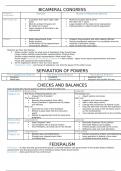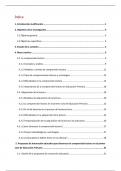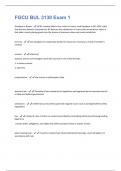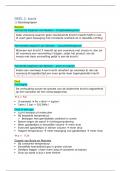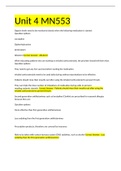Class notes
WGU C963 Complete class notes solution guide 2024.
- Institution
- Western Governors University
BICAMERAL CONGRESS House of Legislature Senate House of Representatives Who make up? 2 senators from each state (100 total) Must be at least 30 years old Be citizen for 9 years Legal resident of the state to be represented Must be 25 years old to serve Be citizen ...
[Show more]
